1 June
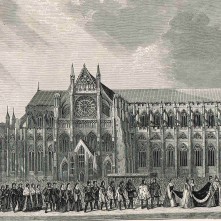
Coronation of Anne Boleyn
1451 or 1452 – Birth of Giles Daubenay, administrator, soldier, and diplomat. He was influential in Henry VII's reign, and Catherine of Aragon wrote that "he was the man who could do most in private with the king".
1563 – Birth of Robert Cecil, 1st Earl of Salisbury, politician and courtier. Cecil was the son of William Cecil, 1st Baron Burghley, and his second wife, Mildred. It was Cecil who proclaimed the accession of King James I after Elizabeth I's death.
1533 - Coronation of Queen Anne Boleyn at Westminster Abbey. Click here to read more about it.
1571 – Execution of Catholic martyr and civil lawyer John Story, at Tyburn.
1573 – Birth of explorer James Rosier in Suffolk. Rosier went on the 1605 voyage to explore the fishing grounds off the Maine coast as "cape merchant, observer, and reporter", and recorded the voyage in a journal.
1579 – Death of Robert Horne, Bishop of Winchester, at Winchester Place, Southwark. He was buried at Winchester.
1583 – Death of George Carew, Dean of Exeter and Dean of the Chapel Royal. He was buried at St Giles-in-the-Fields, London.
1593 – Inquest into the death of Christopher Marlowe after he was stabbed on the 30th May. The coroner ruled that Ingram Frizer had killed Marlowe in self-defence after a fight over a bill.
1598 – Death of Thomas Preston, playwright and Master of Trinity Hall, Cambridge. He was buried in Trinity Hall Chapel. He is best known for his play "Cambises".
1616 – Burial of Sir Thomas Parry, MP and administrator, at Westminster Abbey. His father was the Thomas Parry who was Comptroller and Treasurer of Elizabeth I's household.
2 June
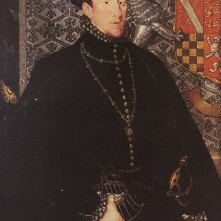
Thomas Howard, 4th Duke of Norfolk
1535 – Death of Sir Humphrey Coningsby, Judge.
1536 – Death of John Stewart (Stuart), 2nd Duke of Albany, at his château of Mirefleur in the Auvergne.
1536 – Jane Seymour's first appearance as Queen.
1537 – Executions of rebels Sir Francis Bigod, George Lumley and Sir Thomas Percy after Bigod's Rebellion in the aftermath of the Pilgrimage of Grace.
1567 – Death of Shane O'Neill, Irish chieftain. He was killed by the Scots who cut his throat.
1572 – Execution of Thomas Howard, 4th Duke of Norfolk. He was buried in the Chapel of St Peter ad Vincula at the Tower of London.
1581 – Execution of James Douglas, 4th Earl of Morton and former regent of Scotland, for treason. He was executed in Edinburgh, at the cross, by the "maiden", a type of guillotine.
1595 – Death of William Wickham, Bishop of Winchester, at Winchester House, Southwark - either this date or 12th June.
1609 – Burial of Elizabeth Russell (née Cooke), Lady Russell, linguist and courtier. She was buried at Bisham Church. She was the daughter of Sir Anthony Cooke and wife of Sir Thomas Hoby and then, after his death, Lord John Russell.
1626 – Death of Sir Edward Bromley, Judge.
1636 – Death of Theophilus Field, Bishop of Hereford. He was buried at Hereford Cathedral.
3 June
1535 - The King's former Lord Chancellor, Sir Thomas More, was interrogated in the Tower of London by Thomas Boleyn, Thomas Audley, Thomas Cromwell and the Duke of Suffolk regarding the royal supremacy. They tried to make him give them an answer as to whether the statute of supremacy was lawful. He would not give them a straight answer. Click here for more on this.
1535 – Thomas Cromwell, Henry VIII's Vicar-General, ordered all bishops to preach in support of the royal supremacy and to remove all references to the Pope from mass books and other church books.
1536 – Richard Sampson was nominated as Bishop of Chichester by Henry VIII.
1594 – Death of John Aylmer, Bishop of London, at Fulham Palace. He was buried at St Paul's Cathedral.
4 June
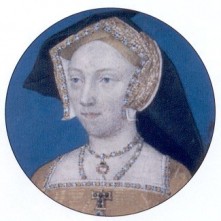
Jane Seymour
1534 – Death of Sir Edward Guildford at Leeds Castle. Guildford acted as guardian to John Dudley (future Duke of Northumberland) and held the posts of Marshal of Calais, Constable of Dover Castle and Lord Warden of the Cinque Ports.
1536 – Jane Seymour was proclaimed Queen at Greenwich Palace. Charles Wriothesley, the Tudor chronicler, recorded: “Also the 4th daie of June, being Whitsoundaie, the said Jane Seymor was proclaymed Queene at Greenewych, and went in procession, after the King, with a great traine of ladies followinge after her, and also ofred at masse as Queen, and began her howsehold that daie, dyning in her chamber of presence under the cloath of estate.”
1550 (some sources say 5th June) - Robert Dudley married Amy Robsart at the royal palace of Sheen at Richmond, near London. The marriage was attended by the then king, Edward VI.
1561 – The spire of St Paul's Cathedral caught fire after being struck by lightning. The fire melted the Cathedral's bells and lead from the spire "poured down like lava upon the roof".
1573 – Death of Sir Francis Jobson, administrator, at Monkwick, near Colchester. He was buried in St Giles, Colchester. Jobson was a member of Henry VIII's household, was Master of the Jewel House in 1553, escaped trial for supporting John Dudley in July 1553 and was pardoned by Mary I, and served Elizabeth I as Lieutenant of the Tower of London.
1590 – Baptism of William Cecil, 16th Baron Ros, courtier, ambassador. He was baptised at Newark Castle and was the son of the eldest son of William Cecil, 2nd Earl of Exeter, and Lady Elizabeth Manners.
1597 – Death of Sir Thomas Baskerville, soldier, at Picquency, in Picardy. He had served in the Netherlands under Robert Dudley, Earl of Leicester, and Peregrine Bertie, Baron Willoughby de Eresby, and was knighted in 1588 after the capture of Bergen op Zoom. He was buried in St Paul's Cathedral.
1603 – Death of Christopher Goodman, Church of England clergyman and radical Protestant, at Chester.
1626 – Burial of Thomas Howard, 1st Earl of Suffolk, naval officer and administrator, at Charing Cross, London. He was buried in the Howard vault of Saffron Walden church. He captained the Golden Lion in the struggle against the Spanish Armada in 1588.
5 June
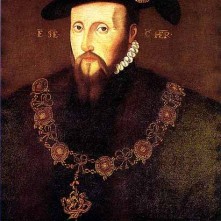
Edward Seymour
1516 – Maria de Salinas married William, 10th Lord Willoughby of Eresby. Maria was a good friend of Catherine of Aragon, and she and William were the parents of Katherine Willoughby, who went on to marry Charles Brandon, Duke of Suffolk.
1536 – Edward Seymour was created Viscount Beauchamp of Hache, Somerset, following the wedding of his sister, Jane Seymour, and Henry VIII.
1539 – Death of Brian Hygdon, Dean of York. Hygdon was close to Wolsey and Cromwell, and served on the King's Council in the North. He was buried in York Minster.
1577 – Death of John Rastell, author, Jesuit and Vice-Rector at Ingolstadt. He died in Ingolstadt.
1588 – Death of Anne de Vere (née Cecil), Countess of Oxford, at Greenwich. She was buried at Westminster Abbey. Anne was the daughter of William Cecil, 1st Baron Burghley, and his second wife, Mildred. She had been contracted to marry Philip Sidney, but married Edward de Vere, 17th Earl of Oxford in 1571. It was not a successful marriage, and the couple separated after Oxford refused to recognise their daughter, Elizabeth, as his.
1597 – Death of Sir John North, soldier, member of Parliament, Justice of the Peace and traveller. He died in the Low Countries.
1600 – Robert Devereux, 2nd Earl of Essex, was charged with insubordination during his time in Ireland at a special hearing at York House. He was ordered to remain under house arrest.
1604 – Death of Thomas Moffet, physician and naturalist, at Wilton, Wiltshire. He is known for his poem, "The Silkewormes and their Flies", which was "the first Virgilian georgic poem in English", and his work on insects, diet and eating habits.
6 June
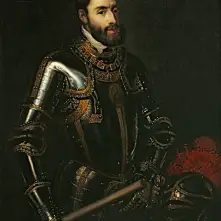
Charles V
1522 – Grand entry of Charles V, Holy Roman Emperor, into London, accompanied by King Henry VIII. There was pageantry and celebration.
1527 – Probable date for burial of Henry Algernon Percy, 5th Earl of Northumberland, in Beverly Minster.
1549 – An army of rebels assembled at Bodmin, Cornwall, and Mayor Bray convened a town meeting where resolutions were put containing the demands of the rebels who were against the introduction of the new “Book of Common Prayer”. This led to the Prayer Book Rebellion.
1556 – Birth of Edward la Zouche, 11th Baron Zouche, at Harringworth, Northamptonshire. He was the only son of George la Zouche, 10th Baron Zouche of Harringworth, and his wife, Margaret. Zouche was a landowner, diplomat and member of James I's Privy Council.
1563 – Baptism of Robert Cecil, only son of William Cecil, 1st Baron Burghley, and his wife, Mildred, at St Clement Danes, Strand.
1597 – Death of William Hunnis, musician and conspirator. He was Master of the Children of the Chapel (royal) in Elizabeth I's reign. He was imprisoned in 1556 in the Tower of London after being involved in a plot to rob the treasury, and was released when Elizabeth I became Queen.
1605 – Playwright William Haughton made his will and died in the next couple of days. His plays included "Englishmen for my Money, or, A Woman will Have her Will", "Patient Grissil" and "Grim the Collier of Croydon, or, The Devil and his Dame", and he wrote or co-wrote many more.
1618 – Death of Sir James Lancaster, merchant and Director of the East India Company, in London. He was buried in All Hallows, London Wall.
7 June
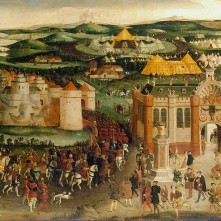
Field of Cloth of Gold
1520 - The first day of the historic meeting between Henry VIII and Francis I of France between the English stronghold of Guînes and the French town of Ardres, on a piece of land referred to as the Field of Cloth of Gold.
1532 – Birth of Amy Robsart (later Lady Dudley) probably at Stanfield Hall, Norfolk. Amy was the daughter of Sir John Robsart of Syderstone, Norfolk, and his wife, Elizabeth. Amy married Robert Dudley, Elizabeth I's favourite, in 1550.
1536 – A water pageant was held in honour of Jane Seymour, the new queen, on the Thames.
1546 – Henry VIII and Francis I signed the Treaty of Ardres (also known as the Treaty of Camp).
1592 – Death of Peter Osborne, administrator. He was buried at St Faith's under St Paul's. He held offices in the Exchequer during Edward VI's reign and is thought to have supported Lady Jane Grey. Osborne served Elizabeth I as an ecclesiastical commissioner and various other posts.
1594 – Roderigo Lopez, Elizabeth I's physician, was hanged, drawn and quartered at Tyburn after being accused by Robert Devereux, Earl of Essex, of conspiring with Spanish emissaries to poison the Queen. Lopez maintained his innocence, and the Queen seemed unsure of his guilt. It is thought that the charges were trumped up. Trivia: Lopez may have been the inspiration for Shakespeare's character, Shylock, in “The Merchant of Venice”.
1599 – Death of Henry Porter, playwright, after being mortally wounded in his left breast by a rapier in an assault carried out by John Day, a fellow writer.
1604 – Death of John Ley, explorer, in London. He was buried in the chancel of St Andrew by the Wardrobe. Ley was the first Englishman to enter the Amazon and one of the first to explore the coast of Guiana.
1618 – Death of Thomas West, 3rd Baron De La Warr, colonial governor (of Virginia), at sea, on his way to Virginia.

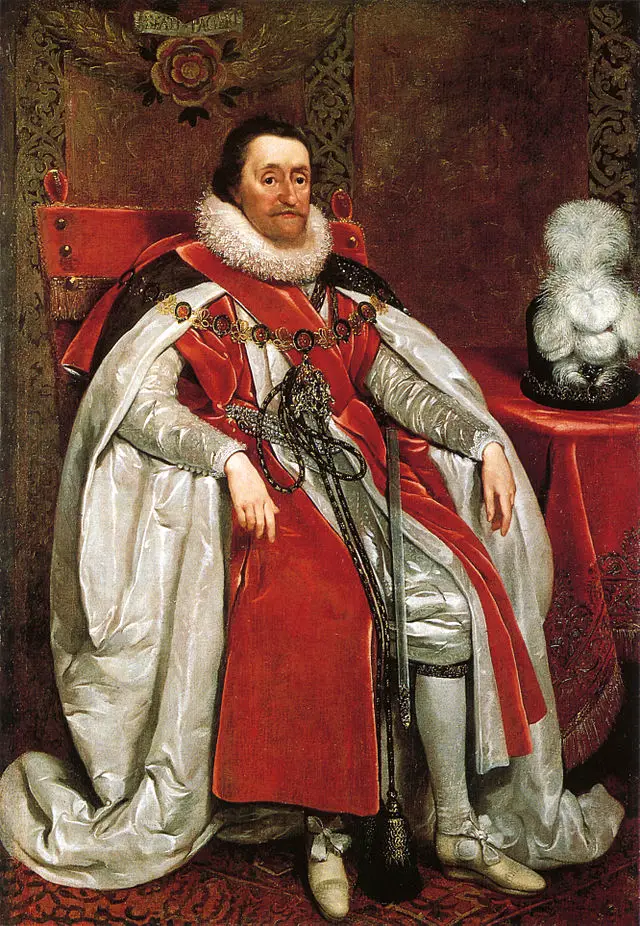
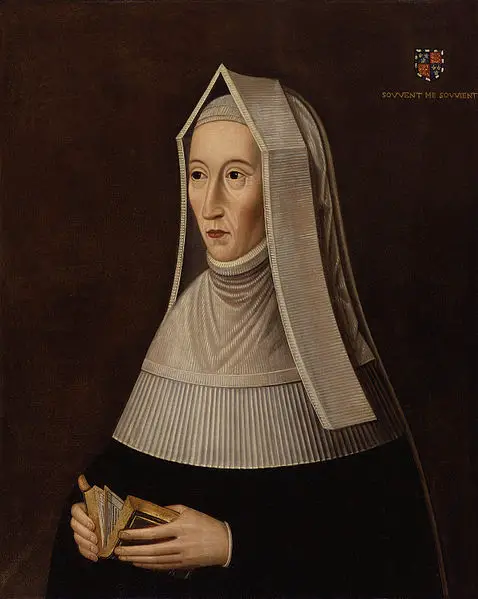
7th June 1546: signing of the Treaty of Ardres, which was illuminated by Henry VIII’s new limner, Levina Teerlinc (she replaced Lucas Horenbout who had died in March 1544). Here’s the high resolution version of the treaty on Wikipedia and, for those of you able to get to Paris, it is in the Musee de Luxembourg’s current exhibition about Les Tudors. http://upload.wikimedia.org/wikipedia/commons/0/01/Ratification_of_the_Treaty_of_Ardres_by_Henry_VIII_in_1546.jpg
Coming face to face with the actual treaty designed and created by the woman I’ve been studying for the past 10 years gave me an incredible tingle!
I met up with Tim & Claire and their family, and Clare & David Cherry at the exhibition back in March – it is a great exhibition and it was fabulous to meet them all. Being Tudor history enthusiasts, if you can get there, you will really enjoy coming face to face with many of the iconic Tudor pieces, including the tiny Chequers Ring!